The archival storage of movie, or if you’re a staunch Brit ‘Film’, posters needn’t be complicated, but it should be done properly.
Like many common paper-based collectibles, for example; newspapers, trading cards, or even photographs, posters weren’t made to last forever, just long enough to look great promoting a movie (or film!). Fortunately, there are a number of simple things you can do to preserve your poster or poster collection for many years to come. Read our guide here:

Tape is evil
For paper conservators, ‘Tape is evil’, is a bit of a mantra. We’re talking about standard pressure sensitive tape here (the stuff you use to wrap a present, or a parcel) and you’ll know the wretched mess it can leave behind if left long enough to do its worst – evidence of old tape is apparent in most homes and offices on books, documents and boxes. As many posters will have been folded at some stage in their lives, tape may well have been used to reinforce a crease, or a tear. The adhesive will gradually seep into the paper and stain it as dries destroying the image and paper it was once applied to protect.
So how do you remove tape?
This is generally the job of a trained conservator who will be able to ensure that the poster isn’t destroyed in the process.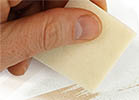 There are many different types of adhesives used in old tape and they require different treatments for removal, one way is to heat it using a tacking iron and gently peeling it away. Tape residues that are more recently applied and haven't completely dried may be removed using a crepe eraser.
There are many different types of adhesives used in old tape and they require different treatments for removal, one way is to heat it using a tacking iron and gently peeling it away. Tape residues that are more recently applied and haven't completely dried may be removed using a crepe eraser.
Add a crepe eraser to your basket here
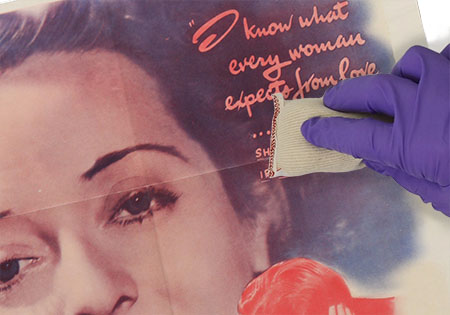
Clean the surface
If a poster has been on display, left uncovered, handled or otherwise, it will be dirty – even if you can’t immediately see the dirt. You don’t want dirt, debris or fingerprints on your poster when it's in the your storage environment. If the poster is in good condition you can gently clean the surface yourself with a document cleaning pad – these will leave residual dust that needs to be brushed away with a soft dusting brush. When handling the poster it's best to wear nitrile gloves or finger cots to prevent oils from your skin penetrating the paper.
Water damage, rust marks or mould stains should be treated by a professional conservator who will be able to clean the poster or improve the appearance of marks. For particularly valuable posters a conservator will be able to wash the paper which will help  to reduce acidity and remove contaminants.
to reduce acidity and remove contaminants.
Add a paper cleaning pad to your basket here | Add Nitrile Gloves / Finger cots to your basket here Add a soft dusting brush to your basket here
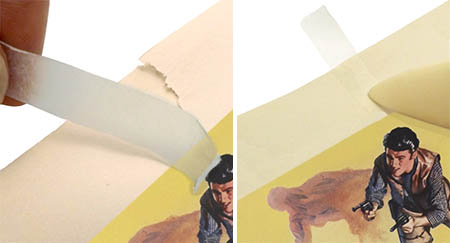
Repair tears in posters
Posters have often been folded, unfolded, refolded…repeat. The added stress will inevitably lead to damage in the paper, often resulting in tears. These can be repaired, and depending upon severity you might be able to do this yourself.
Using Tapes - Repairing minor tears in posters can be relatively easy using an archival quality tape, like this one. After chastising tape, we should probably explain that archival tapes; are designed not to dry out like household pressure sensitive tapes, they are acid-free, and can be removed without damaging the document (also known as being ‘reversible’).
Using backing material – particularly fragile, damaged or valuable posters can benefit from being backed with an archival quality backing such as an acid free archival linen like this, or buffered backing board. Remember, when backing a poster that you may be obscuring part of the document, i.e. notes and identification marks that may be on the rear.
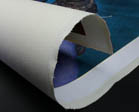 Backing a poster would usually be performed by a professional conservator/restorer who will be able to flatten creases (although this can be done carefully yourself), and also ‘in-fill’ any losses (holes) in the poster where sections are missing. If you are having a poster backed for you, check that the materials used are all acid-free and lignin free, and if paper or board, they should also be buffered.
Backing a poster would usually be performed by a professional conservator/restorer who will be able to flatten creases (although this can be done carefully yourself), and also ‘in-fill’ any losses (holes) in the poster where sections are missing. If you are having a poster backed for you, check that the materials used are all acid-free and lignin free, and if paper or board, they should also be buffered.
Add archival paper repair tape here | Add archival backing linen here
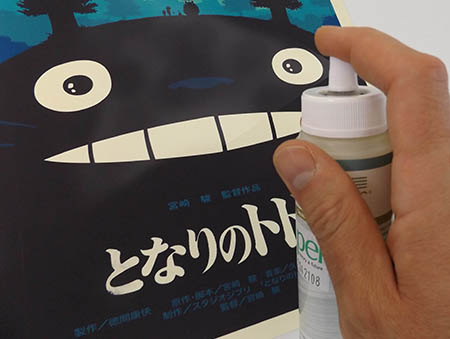
Buffered, or unbuffered for film buffs
Paper is self-destructive, impurities such as lignin which occur naturally in wood, and therefore paper pulp, gradually degrade becoming acidic causing weakening and discolouration of the paper. So, what does ‘buffered’ mean? Buffered paper and boards have had their pH raised to an alkaline level using a ‘buffer’ – usually calcium carbonate. This buffer also helps to neutralise acids which originate within the paper or are introduced by another source like the atmosphere or a non-archival storage container.
Can you ‘Buffer’ a movie poster to protect against acid?
Yes, is the short answer. Using Bookkeeper deacidification spray you can protect posters without compromising the inks. Bookkeeper is simply applied using a spray bottle, uniformly spraying the poster from around 150mm on both sides. The process uses no water, solvents or propellants and is safe for use on movie posters.
Storing in plastic sleeves and pockets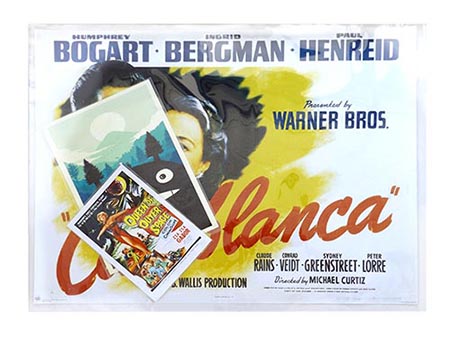
Once your poster is clean, repaired and protected from acid, you can now commence storage.
There are a couple of clear acid-free plastic materials that are commonly used for archival storage of movie posters; Polyethylene, and Polyester.
We recommend using polyester sleeves or pockets due to them offering the best level of protection and clarity. Polyethylene is inert and suitable for archival storage, but it is also much more flexible and not as clear as polyester. Polyester is a stiff material that will protect the poster from being creased, snagged or crumpled, unlike polyethylene. Polyester also creates a static cling which prevents the contents from inadvertently slipping out when being handled. You are best advised to stick to one poster per pocket, trying to insert or extract multiple posters is likely going to cause damage to one or both.
See the full range of clear poster sleeves here
Our polyester is glass clear and suitable for regular handling. Some might call archival polyester ‘Mylar’ or ‘Melinex’ – these are brand names owned by the materials manufacturer Dupont – our polyester is a museum specification product and is used worldwide.
 Buying cheap plastic sleeves is a false economy. Whatever you do, make sure that you do not use any sleeves that contain plasticisers (PVC) – these are usually cheap and are available from standard stationery outlets. Sleeves containing PVC will degrade, turn yellow or cloudy and lead to the development of harmful acids which will ruin any poster stored inside.
Buying cheap plastic sleeves is a false economy. Whatever you do, make sure that you do not use any sleeves that contain plasticisers (PVC) – these are usually cheap and are available from standard stationery outlets. Sleeves containing PVC will degrade, turn yellow or cloudy and lead to the development of harmful acids which will ruin any poster stored inside.
How to safely insert your poster in a pocket. Firstly, to prevent oils from your skin from getting onto your poster, use nitrile gloves, or finger cots (unlike the video – but this is just a cheap print!). New cotton gloves are OK, but will eventually get dirty and they reduce your dexterity, this can be fiddly work!
Backing boards
Backing boards are not necessary if you are storing in polyester, but will support the poster and help protect it, it will also make insertion or removal from a sleeve easier. When selecting a backing board you must ensure that it is; buffered, acid free, and lignin free. Museum mounting board like this one, also used for conservation quality picture framing in galleries, are ideal for this purpose. Whether you choose to buy backing boards or not, you must not store your poster on standard cardboard. Standard cardboard is acidic, those acids will migrate into your poster and destroy it.
Putting your poster in a box or cabinet 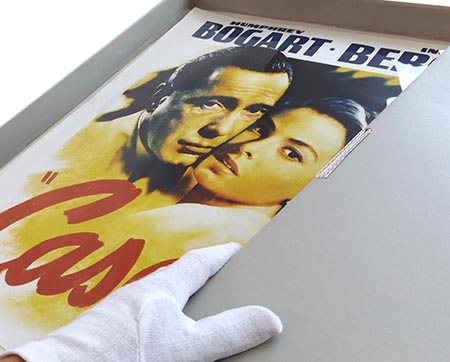
The danger of UV light - One of the biggest enemies for posters (or any printed art) is UV light. UV light will fade inks and cause reactions in the paper turning it yellow. One of the main sources of UV is the sun, but it is also present in lower levels from fluorescent lights. In order to preserve your posters, you should minimise the amount of UV light exposure. That generally means enclosed storage, i.e. a box, or a cabinet.
We’re only going to discuss flat storage here as this is the best method for preserving your posters. Rolling and folding posters places stresses on the paper although It’s understandable that storage space may determine the method you choose.
Boxes - The same general rules apply for boxes, they must be; buffered, acid free, and lignin free. Buffering is really important for the box as it will go some way to neutralising acids that might otherwise migrate from external sources such as, wooden shelving, adjacent items such as PVC plastics or airborne atmospheric pollutants. The box will also exclude UV light and dust from the storage environment further extending the life of your poster or collection. When choosing a box, ensure that you have enough space around the sleeved posters to access the contents. Choose a box without glues that could dry out and potentially ‘off-gas’ acidic vapour, or staples that could damage the contents.
Our movie poster boxes meet all of the criteria you require for the best archival specification and are sized specifically to house the most popular sizes.
See the full range of large poster boxes here
Plan chest cabinets – This is the ‘Rolls Royce’ option for  storing your poster collection. It’s a common theme, but you need to be careful about acids here too, and cabinets can present a hidden danger. Enamel paints, often used in plan chests and older office furniture are known to ‘off-gas’, creating an acidic environment which will damage paper – conservation grade powder coat as our range of plan chest cabinets is finished with - is much safer. Wooden cabinets are also not considered safe as the wood itself will allow acids to migrate into your collection. If you are using wood, it must be lined with a barrier material to prevent this.
storing your poster collection. It’s a common theme, but you need to be careful about acids here too, and cabinets can present a hidden danger. Enamel paints, often used in plan chests and older office furniture are known to ‘off-gas’, creating an acidic environment which will damage paper – conservation grade powder coat as our range of plan chest cabinets is finished with - is much safer. Wooden cabinets are also not considered safe as the wood itself will allow acids to migrate into your collection. If you are using wood, it must be lined with a barrier material to prevent this.
See the full range of plan chest cabinets here
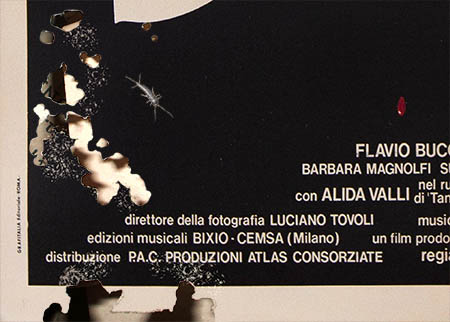
Where should you store posters?
Almost as important as anything else in this list is the storage location. We’ve already mentioned the effects of UV light, any unboxed posters should be excluded from exposure to UV light. The invisible issues are less obvious but just as, if not more, damaging.
Temperature and humidity - You could write a book (wouldn’t make an exciting screenplay!) about this, but the basics are fairly simple. (If you don’t know what RH ‘Relative Humidity’ is, read more here). Ideally you need to keep the RH between 40% (less is generally too dry) and 60% (more is too humid), you can measure the RH in your storage area using a hygrometer like this. Basically, among other issues; Too dry and the paper will shrink, become stressed and brittle, too humid and the paper will expand, condensation will form and mould will grow. You also need to ensure that the RH is stable which goes hand-in-hand with a stable temperature, fluctuations stress the paper as it expands and contracts. Storing in a box will help reduce fluctuations. Museums will use silica gel (like these Prosorb Cassettes) to ensure the correct level of humidity is maintained and is stable.
Pests – There are some insects that will quite happily eat their way through your collection, or the mould growing on your collection. Silverfish and the Common Booklouse to name a couple, will eat damp paper. An unprotected poster may also collect insect excretions which will stain and damage the paper. A polyester sleeve, good box and the correct environment are good protection, but you can also use these silverfish traps for extra security.
So, there you have it, to protect and preserve your movie posters the shopping list is as follows:
Remember, for valuable and rare posters it is always advisable to speak to a trained conservator who will be able to advise on the best way to clean, repair and store your particular poster.